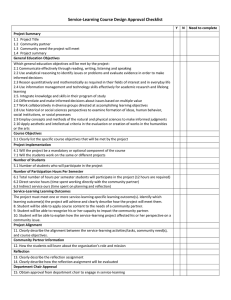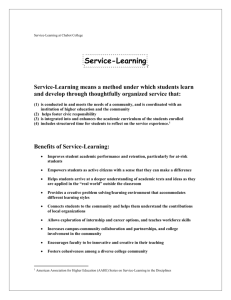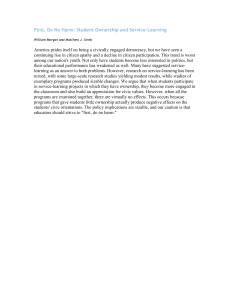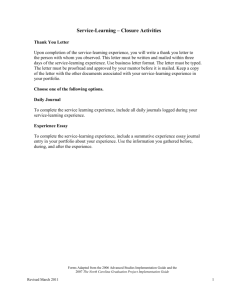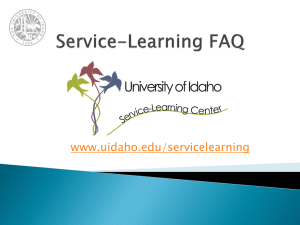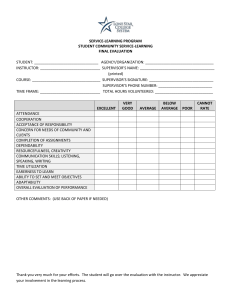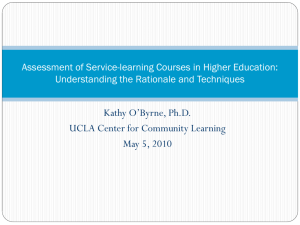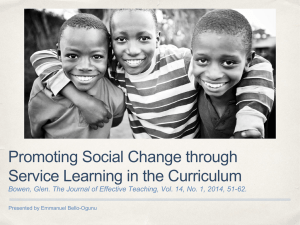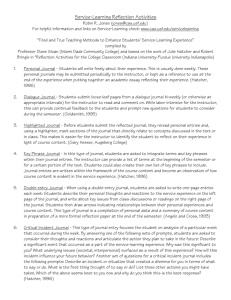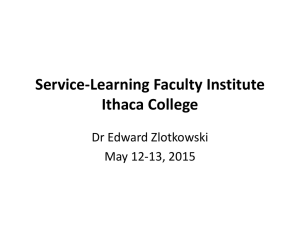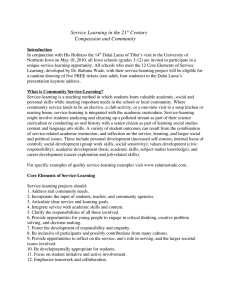Workshop PowerPoint
advertisement
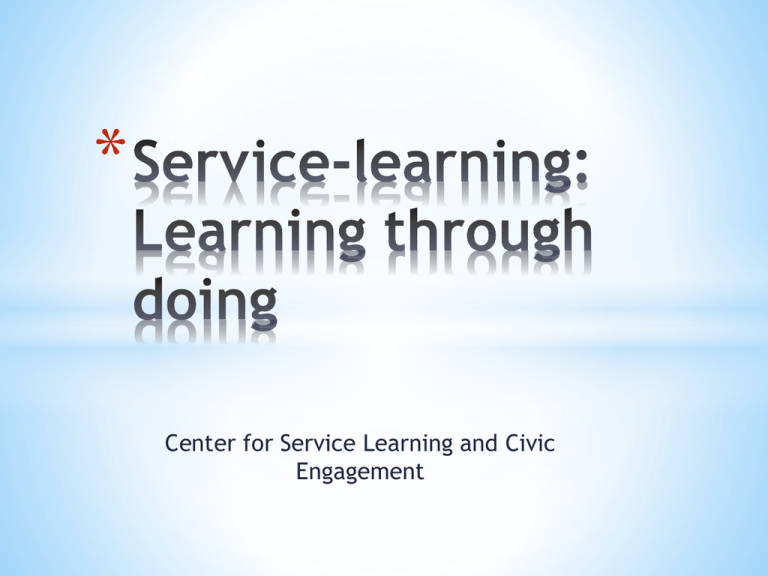
* Center for Service Learning and Civic Engagement * * It is a structured learning experience within an academic course. * Service work is directed toward achieving course learning objective/s and toward making meaning contributions. * Service activity is used to clarify, illustrate, challenge, or stimulate additional thought about academic content of the course. * Structured written and/or oral reflection ties the service experiences to academic content. *Course learning objectives should be linked to meaningful human, safety, educational, and environmental needs. * *Course materials such as lectures, readings, and discussions are then applied by students directly to support or enhance community needs. * * Direct Service-learning * Person-to-person, face-to-face service projects * Indirect Service-learning * Working on broad issues, environmental projects * Advocacy Service-learning * Educating others about topics of public interest * Research-based Service-learning * Gathering and presenting information on areas of interest and need * * Examples: * Tutoring other students and adults * Conducting art/music/dance lessons for younger students * Helping other students resolve conflicts * Creating life reviews for Hospice patients IMPACT on/skills practiced: caring for others, dependability, interpersonal skills, problem-solving, “big picture” learning * * Examples: * Compiling a town history * Restoring historic structures or building lowincome housing * Restoring ecosystems * Preparing preserve areas for public use IMPACT on/skills practiced: cooperation, teamwork skills, playing different roles, organizing, prioritizing, project-specific skills * * Examples: * Planning and putting on public forums on topics of interest in the community; * Conducting public information campaigns on topics of interest or local needs; * Working with elected officials to draft legislation to improve communities; * Training the community in fire safety or disaster preparation. IMPACT on/skills practiced: understanding rules, systems, processes; engaged citizenship, working with adults. * * Examples: * Writing a guide on available community services; * Translating it into Spanish or other languages of new residents * Conducting longitudinal studies of local bodies of water; water testing for local residents; * Gathering information and creating brochures or videos for nonprofit or government agencies; * Mapping state lands and monitoring flora and fauna; * Conducting surveys, studies, evaluations, experiments, interviews, etc. IMPACT on/skills practiced: learn how to learn/get answers/find information, make discriminating judgments, work systematically, organizational skills, how to assess, evaluate and test hypotheses. * * *The “rule of thumb” is that for the student it includes: *the preparation and analysis time, *the time for written and oral reflection, and *the actual time spent in the community. (Actual time is suggested that service be at least 20 hours). * To qualify as a service-learning course, 15% of the student’s grade should be based on this activity. * 1. 2. A well-structured grading rubric! 3. Do not have a “service” grade and a “just learning” grade. 4. Do grade on the final, tangible project deliverable/s which demonstrates the students’ learning. Evaluation of student’s ability in meeting course learning objectives – grade for their learning – not their service. * 1.Structured 2.Specific 3.Concrete 4.Provide examples of past good work * Major assignment: papers, presentations, test questions can connect service experience to course content. Supporting reflection assignment: Use guided questions to compel students to think critically and share through blogs, reflection papers, class discussions. Additional feedback: Seek feedback from community partner where student is providing service Compliance with deadlines: Handing in forms on time, communicating with faculty, completing the Service learning evaluation at end of semester What learning objectives would best be augmented by service-learning?
